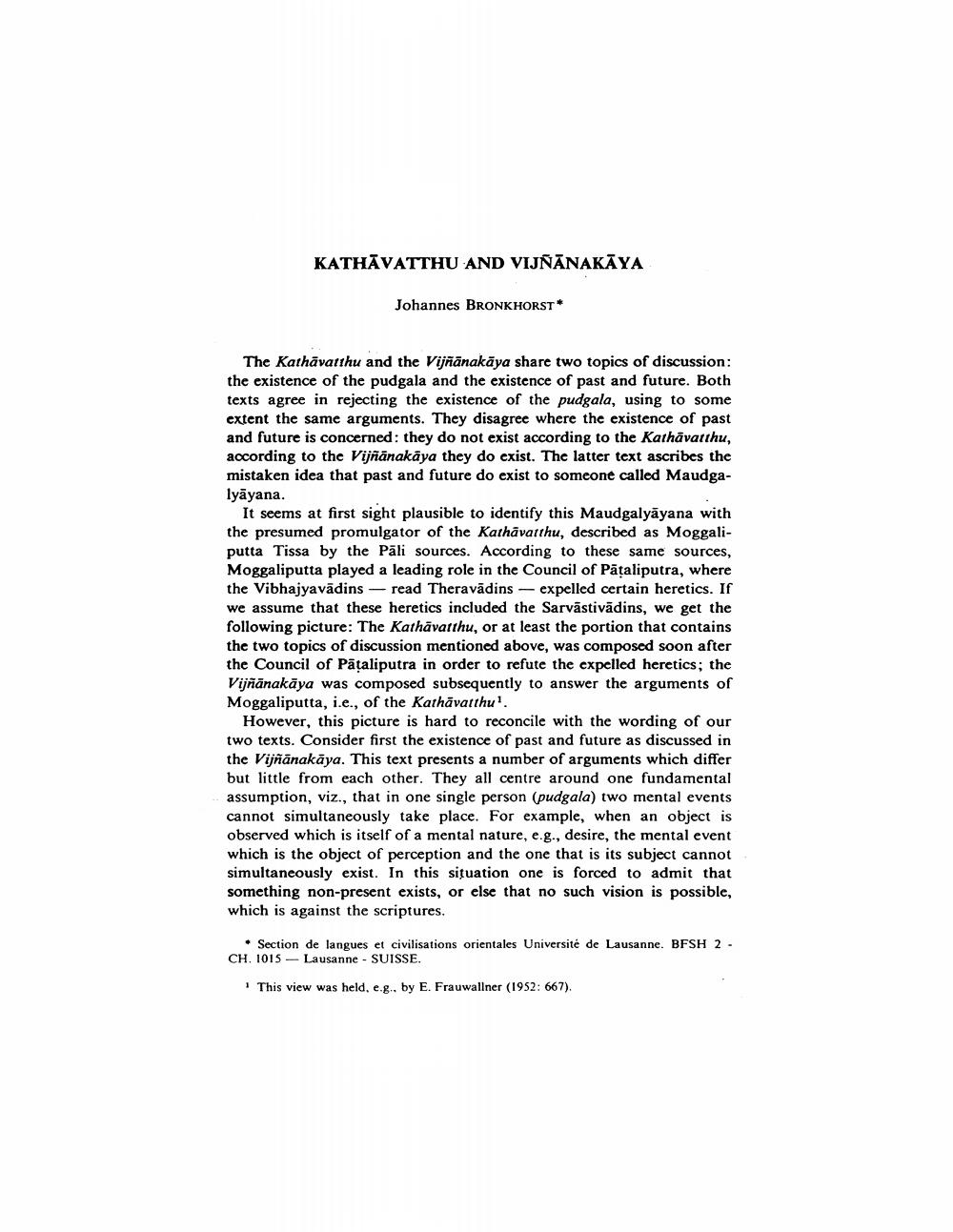Book Title: Kathavatthu And Vijnanakaya Author(s): Johannes Bronkhorst Publisher: Johannes Bronkhorst View full book textPage 1
________________ KATHAVATTHU AND VIJNANAKAYA Johannes BRONKHORST* The Kathāvatthu and the Vijñānakāya share two topics of discussion: the existence of the pudgala and the existence of past and future. Both texts agree in rejecting the existence of the pudgala, using to some extent the same arguments. They disagree where the existence of past and future is concerned: they do not exist according to the Kathāvatthu, according to the Vijñānakaya they do exist. The latter text ascribes the mistaken idea that past and future do exist to someone called Maudgalyāyana. It seems at first sight plausible to identify this Maudgalyāyana with the presumed promulgator of the Kathāvatthu, described as Moggaliputta Tissa by the Pali sources. According to these same sources, Moggaliputta played a leading role in the Council of Pataliputra, where the Vibhajyavadins read Theravādins expelled certain heretics. If we assume that these heretics included the Sarvästivādins, we get the following picture: The Kathāvatthu, or at least the portion that contains the two topics of discussion mentioned above, was composed soon after the Council of Pataliputra in order to refute the expelled heretics; the Vijñānakāya was composed subsequently to answer the arguments of Moggaliputta, i.e., of the Kathāvatthu1. However, this picture is hard to reconcile with the wording of our two texts. Consider first the existence of past and future as discussed in the Vijñānakaya. This text presents a number of arguments which differ but little from each other. They all centre around one fundamental assumption, viz., that in one single person (pudgala) two mental events cannot simultaneously take place. For example, when an object is observed which is itself of a mental nature, e.g., desire, the mental event which is the object of perception and the one that is its subject cannot simultaneously exist. In this situation one is forced to admit that something non-present exists, or else that no such vision is possible, which is against the scriptures. * Section de langues et civilisations orientales Université de Lausanne. BFSH 2 - CH. 1015 Lausanne - SUISSE. This view was held, e.g., by E. Frauwallner (1952: 667).Page Navigation
1 2 3 4 5
